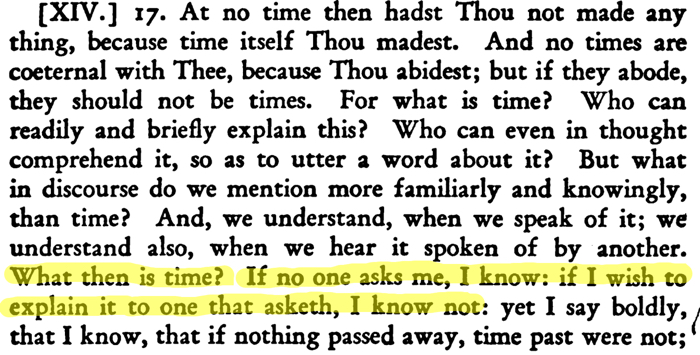Issue 98: Time Standards - leap seconds forwards and backwards, moon time, internet time (then and now), and aliens

This week we look at time from a few points of view:
- Eliminating the leap second
- If adding a second causes problems, imagine removing a second
- What time is it on the Moon?
- Internet time is "black magic"
- From millisecond precision to nanosecond precision
- Explaining our concept of time to aliens
- Mittens in the Groceries
Feel free to send this newsletter to others you think might be interested in the topics. If you are not already subscribed to DLTJ's Thursday Threads, visit the sign-up page. If you would like a more raw and immediate version of these types of stories, follow me on Mastodon where I post the bookmarks I save. Comments and tips, as always, are welcome.
Eliminating the leap second
The leap second change triggered a massive Reddit outage in 2012, as well as related problems at Mozilla, LinkedIn, Yelp and airline booking service Amadeus. In 2017, a leap second glitch at Cloudflare knocked a fraction of the network infrastructure company's customers' servers offline. Cloudflare's software, comparing two clocks, calculated that time had gone backward but couldn't properly handle that result.
Programmers can be forgiven for assuming that every minute has 60 seconds. But sometimes they have 61. And when that sometimes happens, you get unexpected results. Google proposes using a "leap smear", where computer clocks spread the extra second across all of the 86,400 seconds that make up a day.
If adding a second causes problems, imagine removing a second
If the Earth speeds up enough, we might find ourselves pondering over the possibility of a negative leap second. According to the Time and Date folks, a day in 2021 is averaging about 0.2ms faster than the 84600 atomic seconds per day, ~70ms/year, so at most 14 years of this would put us over the threshold (super unlikely). In reality, we don’t have to speed up a full 1000ms of rotation speed because there was always a fractional difference in UT1-UTC. The time specs involving leap seconds always included the possibility that a negative leap second could happen, but I don’t think anyone really expected it actually happen. In more practical terms, Either July 31 or December 31 23:59:59 would just… disappear from existence, with clocks ticking from 23:59:58 seconds to 00:00:00.
Add this to the list of things that are possible in our corner of the universe.
What time is it on the Moon?
The Moon doesn’t currently have an independent time. Each lunar mission uses its own timescale that is linked, through its handlers on Earth, to coordinated universal time, or utc — the standard against which the planet’s clocks are set. But this method is relatively imprecise and spacecraft exploring the Moon don’t synchronize the time with each other. The approach works when the Moon hosts a handful of independent missions, but it will be a problem when there are multiple craft working together. Space agencies will also want to track them using satellite navigation, which relies on precise timing signals.
Robust, accurate time is a given here on Earth. (There are undoubtedly applications where "robust" and "accurate" aren't good enough, but most humans aren't faced with those challenges.) Everyone has a sense of the importance of a common understanding of time. But what if you are setting up a homestead on another celestial body? You might want to sort out your time standards before you build and ship the equipment to your new location. For instance, "The Moon’s gravitational pull is weaker than Earth’s, meaning that, to an observer on Earth, a lunar clock would run faster than an Earth one." So you are not only synchronizing clocks on the Moon, but you also need to deal with the skew of time compared to the Earth.
Internet time is "black magic"
By 1988, Mills had refined N.T.P. to the point where it could synchronize the clocks of connected computers that had been telling vastly differing times to within tens of milliseconds—a fraction of a blink of an eye. “I always thought that was sort of black magic,” Vint Cerf, a pioneer of Internet infrastructure, told me.
When Vint Cerf, a co-developer of TCP/IP, thinks something is black magic, you can wager that it is intense technology. This article peels back some of the mystique of one of the oldest internet standards: Network Time Protocol (NTP). NTP has been under the care of mostly one person since it was first developed in the late 1980s. This is a story about honoring an unsung—if prickly—hero of the common good of the internet and how the community is advancing the state of the art beyond what a 40-year-old standard can support.
I remember getting into the bowels of NTP configurations in the early 1990s when I was helping configure a cluster of NeXT cubes at my university. (I also remember longing for an excuse to get the hardware for a stratum 1 server so we could put our mark on the net.)
From millisecond precision to nanosecond precision
Implementing Precision Time Protocol (PTP) at Meta allows us to synchronize the systems that drive our products and services down to nanosecond precision. PTP’s predecessor, Network Time Protocol (NTP), provided us with millisecond precision, but as we scale to more advanced systems on our way to building the next computing platform, the metaverse and AI, we need to ensure that our servers are keeping time as accurately and precisely as possible. With PTP in place, we’ll be able to enhance Meta’s technologies and programs — from communications and productivity to entertainment, privacy, and security — for everyone, across time zones and around the world.
And this is the advancement of network time from the 1980's NTP (millisecond precision) to today's PTP (nanosecond precision). This article's first part discusses the importance of very precise time at internet-scale companies. Even if you don't care about the time standards, it is interesting to read about how Facebook structures its databases in its highly distributed architecture.
Explaining our concept of time to aliens
An imaginary conversation in 68 tweets, including bits like:
- "YOUR CALENDAR IS BASED ON A RELIGIOUS LEADER THAT NOT EVERYONE BELIEVES IN?" ... "well, on his birth. And yeah, we got it wrong by a couple years."
- "yep! Our 9th month is named after the number 7, and so on for 10, 11, and 12."
- "yeah so cultures before then had a 12 month system, because of the moon. But they had been using a 10 month system, before switching to 12 and giving them the modern names"
Note! That quote above is a web archive of the first tweet in a thread, and I had originally intended the reader to follow that tweet onto twitter-dot-com to read the rest. Well, "Twitter" is now "Ex-Twitter", and anything beyond the first tweet isn't readable anymore unless you have a paid account on X. Fortunately, I used Thread-Reader-App and the Wayback Machine to save a copy of that writing.
Mittens in the Groceries

This is one of Mittens' quirks. She waits for the groceries to come in from the car, then starts nosing through them. She is looking for the pack of strawberries so she can rub her face on the rough edges of the plastic container. Other plastic containers of strawberries will do in a pinch, but her clear favorite is strawberries.